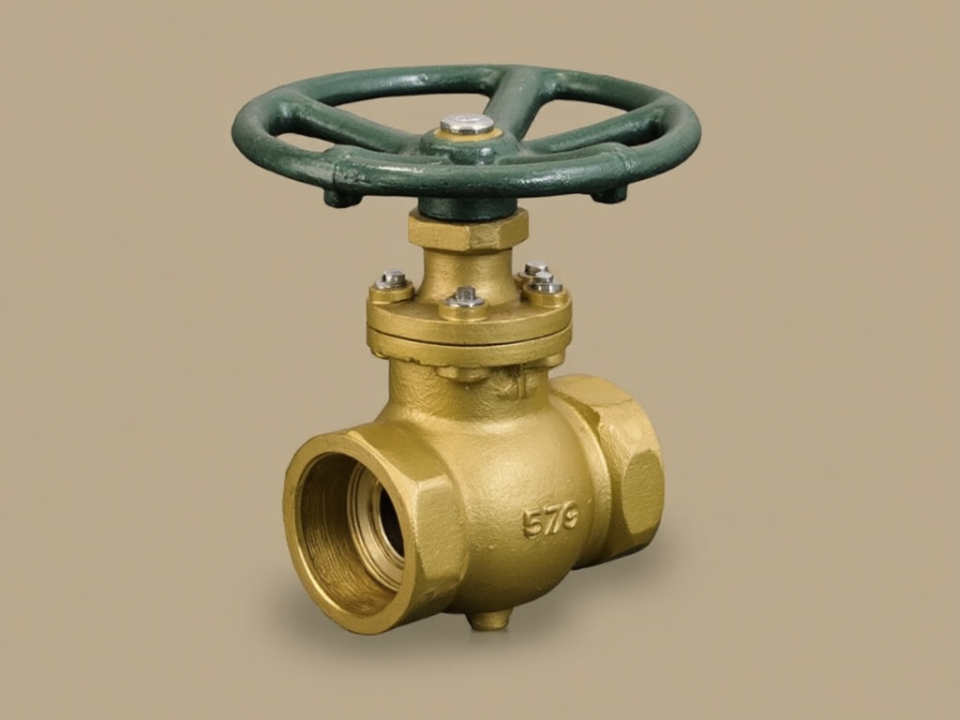Al trabajar con conexiones roscadas para tuberías, probablemente se haya encontrado con los términos rosca BSP y conexión NPT. Estos dos estándares de roscado se utilizan ampliamente en aplicaciones de tuberías y válvulas industriales, pero no son intercambiables. Comprender sus diferencias es esencial para seleccionar la conexión adecuada para su sistema.
En este artículo, analizaremos las diferencias entre las tuberías BSP y NPT: su estructura, uso, compatibilidad y cómo identificarlas. Si no tienes experiencia en tuberías industriales o necesitas un repaso rápido, esta guía simplifica todo lo que necesitas saber.
¿Qué significa NPT?
La rosca NPT (National Pipe Thread) es el tipo de rosca estándar que se utiliza principalmente en los Estados Unidos para los accesorios de tuberías. Tiene un diseño cónico que le permite crear un sello hermético y a prueba de fugas cuando se combina con un accesorio correspondiente.
- Ángulo de rosca: 60°
- Forma: Picos y valles aplanados
- Mecanismo de sellado: Requiere un sellador de roscas (por ejemplo, cinta de teflón) para garantizar una conexión sin fugas
- Usado comúnmente en: Plomería, gasoductos y aplicaciones industriales en EE. UU.
Tipos de roscas NPT
- NPT (tubería cónica nacional) – Se utiliza para aplicaciones de presión, garantizando un sellado hermético mediante conicidad.
- NPS (tubería recta nacional) – Una alternativa de rosca recta que requiere una junta tórica o junta para evitar fugas.
¿Qué es una rosca BSP?
BSP (British Standard Pipe) es el estándar de roscado utilizado en el Reino Unido, Australia y muchos otros países. A diferencia de NPT, BSP viene en dos variantes: BSPT (cónica) y BSPP (paralela).
- Ángulo de rosca: 55°
- Forma: Picos y valles redondeados
- Mecanismo de sellado:
- BSPT requiere un sellador de roscas (similar a NPT)
- BSPP requiere un sello adherido o una junta tórica
- Usado comúnmente en: Europa, Asia, Australia e industrias como el tratamiento de agua y los sistemas hidráulicos.
Tipos de roscas BSP
- BSPT (tubería cónica según norma británica) – Se sella mediante interferencia de rosca y requiere sellador.
- BSPP (tubería paralela según norma británica) – Utiliza una arandela o junta tórica para sellar en lugar de interferencia de rosca.
BSP vs NPT: Diferencias clave
Para identificar rápidamente si un accesorio de tubería es BSP o NPT, considere las siguientes diferencias:
| Característica | Rosca BSP | Rosca NPT |
| Ángulo de rosca | 55° | 60° |
| Forma del hilo | Picos y valles redondeados | Picos y valles planos |
| ¿Cónico o paralelo? | BSPT (cónica) y BSPP (paralela) | Siempre cónico (excepto NPS) |
| Caza de focas | BSPP requiere una junta tórica; BSPT requiere sellador | Requiere sellador de roscas |
| Uso geográfico | Reino Unido, Australia, Europa, Asia | Estados Unidos, Canadá |
¿Son compatibles BSP y NPT?
No, las roscas BSP y NPT no son compatibles debido a sus diferentes ángulos de rosca, formas y mecanismos de sellado. Incluso si parecen encajar, no crearán un sellado adecuado, lo que provocará fugas o fallas del sistema.
Excepción: Algunos casos permiten utilizar BSPT y NPT juntos en aplicaciones de baja presión, pero no se recomienda para sistemas críticos o de alta presión.
Cómo identificar roscas BSP y NPT
Para determinar si está trabajando con roscas BSP o NPT:
- Compruebe el ángulo de la rosca – Utilice un calibre de rosca para medir el ángulo (55° = BSP, 60° = NPT).
- Observa la forma – BSP tiene roscas redondeadas, mientras que las roscas NPT tienen picos afilados y planos.
- Medir la conicidad – Si es paralelo, es probable que sea BSPP; si es cónico, podría ser BSPT o NPT.
Aplicaciones industriales de las roscas BSP y NPT
¿Dónde se utilizan los accesorios NPT?
- Fontanería (tuberías de agua y gas)
- Industrias del petróleo y el gas
- Sistemas de compresión de aire
- Válvulas de bola industriales
¿Dónde se utilizan las roscas BSP?
- Sistemas hidráulicos y neumáticos
- Plantas de tratamiento de agua
- Riego agrícola
- Válvulas de bola industriales en mercados no estadounidenses
Preguntas frecuentes
¿Qué significa NPT?
NPT significa Hilo de tubería nacional, el estándar estadounidense para roscas de tuberías cónicas, utilizado principalmente en aplicaciones industriales y de plomería.
¿Se pueden mezclar roscas BSP y NPT?
No, las roscas BSP y NPT tienen diferentes ángulos y mecanismos de sellado, lo que las hace incompatibles.
¿Cómo identifico una rosca BSP?
Compruebe que el ángulo de la rosca sea de 55° y que los picos sean redondeados. Si la rosca es paralela, es BSPP; si es cónica, es BSPT.
¿Los accesorios NPT requieren un sellador?
Sí, las conexiones NPT requieren un sellador de roscas como cinta de teflón o sellador de tuberías para evitar fugas.
¿Qué industrias utilizan BSP y NPT?
BSP es común en Europa, Australia y Asia, mientras que NPT se utiliza principalmente en EE. UU. y Canadá para tuberías industriales y sistemas de gas.
¿Por qué elegir Onero Valve para sus necesidades de válvulas de bola industriales?
En Onero Valve, nos especializamos en válvulas de bola industriales de alta calidad diseñadas para una integración perfecta con conexiones de rosca de tuberías BSP y NPT. Como fabricante confiable con certificaciones ISO9001, API6D y CE, garantizamos precisión, durabilidad y rendimiento en cada producto.
Nuestra gama de productos incluye:
- Válvulas de bola flotante – Autoajustable y compacto para diversas aplicaciones industriales.
- Válvulas de bola de muñón – Estable bajo alta presión.
- Válvulas de bola de entrada superior – Fácil mantenimiento con diseño de acceso superior.
- Válvulas de bola con asiento duro – Mayor durabilidad para entornos extremos.
- Válvulas de bola totalmente soldadas – Máxima prevención de fugas con cuerpo de una sola pieza.
Con más de tres décadas de experiencia, Onero Valve lidera la industria con fabricación avanzada, innovación y garantía de calidad. Ya sea que necesite accesorios BSP o NPT, le ofrecemos la mejor solución adaptada a sus necesidades. ¡Contáctenos hoy para encontrar la válvula de bola industrial adecuada para su aplicación! Visita Onero Valve




